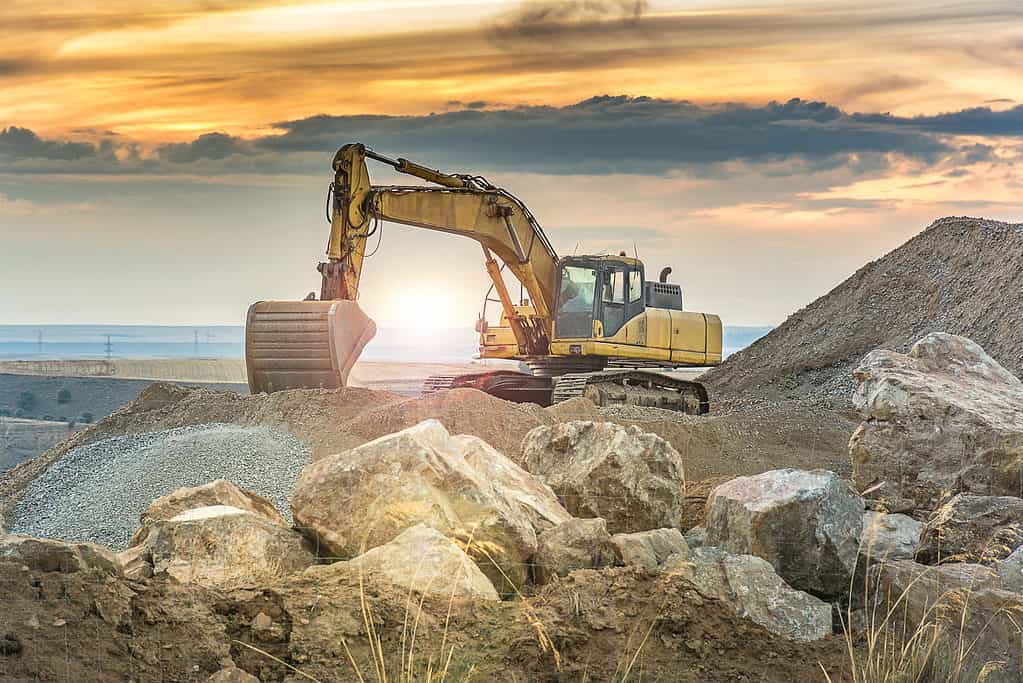Stone and marble are widely used in the construction of landmarks and structures throughout the world. Carrara in Tuscany, Italy, Portland Quarry in England, Paros and Pentellic Quarries in Greece, and Rutland Quarry in Vermont, United States, are among the most renowned quarries on the globe.
With so many quarries in the world, many of which contain unique materials, no two are the same. Today we’re going to be looking at the largest sandstone quarry located in South Amherst, Ohio!

©iStock.com/Juan-Enrique
History of the Amherst Quarries
In 1828, Jonathan Baldwin, Sr., the future founder of Baldwin University, moved to Middleburg Township in Cuyahoga County after arriving from Connecticut. Here, he bought a sizable piece of property and built a house.
Near his home in 1842, he saw a narrow stone slab with a grainy quality that made him think it would be good for grindstones. He brought it home, used an old axe to form it into a grindstone, and discovered after using it that it had superior sharpening abilities than any stone he had encountered in Connecticut.
Baldwin began turning out grindstones on a lathe that he powered with water. He produced Berea Grit grindstones for the following ten years. Berea Sandstone entered the building industry between the years 1850 and 1870 and quickly became known as a national standard for building stones.
It is thought that Henry Warner delivered the first stone shipped out from this region in 1847 when he initially established the Brownhelm quarry, afterward owned by the Worthingtons. The quarry was eventually bought by contractor John Worthington.
After purchasing this quarry site for $600.00, Mr. Warner operated it for six years before selling it for $6,000.00. He was a Middlesex County, Connecticut native who had a variety of experiences prior to joining the first generation of quarrymen in Lorain County. Around 1854 or 1855, he later started working with Baxter Clough in the quarry industry.

©James St. John / Flickr – License
A Quarry Resurgence
On the many quarries in Amherst and South Amherst, a number of quarry firms grew over time. Amherst was connected to railroads by extensive quarrying. Additionally, it helped the population grow.
Amherst had a community of 552 in 1830; by 1870, it had increased to 2,482. The Cleveland Quarries Company (CQC), which currently owns the majority of the regional quarries today, had acquired most of the smaller businesses by 1924.
Sandstone was utilized less frequently to construct homes and other structures during the 1950s. In order to promote the use of sandstone as a lining for furnaces and ladles in the steelmaking process, the CQC launched an advertising campaign.
Three-fourths of American steel makers received their sandstone from CQC for a spell. But in 1992, CQC stopped operating due to a lack of demand. Later in the decade, it resumed, but today it only does a small portion of the job it used to.

©Chris Light, CC BY-SA 4.0 <https://ift.tt/ILghJvH>, via Wikimedia Commons – License
The Future of Amerhest Quarries
An upscale housing development is scheduled for the 900-acre former site of the Cleveland Quarries, and the owners previously conducted a special tour of the area. This information was released in 2017, yet there doesn’t seem to be any movement on building plans from our research.
Justin Lichter, the environmental manager at IRG Co., led the tour. He skillfully maneuvered his ATV around the routes surrounding the eight enormous quarries, which haven’t been used much since the quarrying operation, in action since 1847, but shut down in 1992.
He had to once pause to relocate a tiny tree that had toppled over the path since the tracks are so narrow that they can hardly accommodate the vehicle. The dwellings’ proposed locations were indicated by Lichter while he stepped on the rocky ledge of what the Amherst Historical Society referred to as “The Buckeye Quarry.”
The northern rim of the vast quarry is where the 47 homes would be constructed. A region on the south side of a smaller quarry is located a little further north of the Buckeye Quarry. The location, which will include views of both quarries, will house a five-star hotel and spa.
A beach will be constructed at the westernmost portion of the second quarry. It is located where a railroad line previously accessed the quarry to remove enormous sandstone slabs that were used in several Cleveland-area buildings as well as structures around the world.
Here’s to hoping they keep this land as natural as possible if they haven’t started (or finished) constructing the luxurious neighborhood. Many residents in the area would rather protect the history of the sandstone quarry than have an expensive development that could harm wildlife.
Up Next
- Discover the Largest Forest in Ohio (And What Lives Within It)
- Discover the Coldest Place in Ohio
- Dinosaurs that Lived in Ohio (And Where to See Fossils Today)
The post Where is the World’s Largest Sandstone Quarry? appeared first on AZ Animals.
from Animal News, Facts, Rankings, and More! - AZ Animals https://ift.tt/EIY3uFH